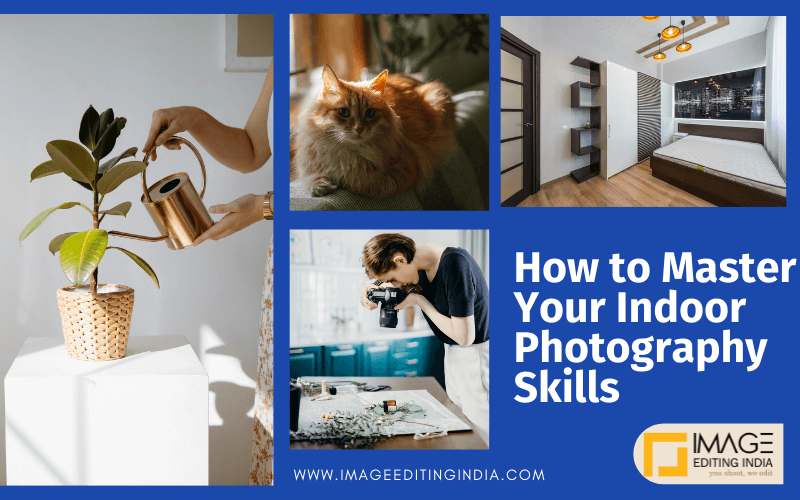
Why Indoor Photography is an Art? How to Master Your Indoor Photography Skills?
Are you passionate for photography? If yes, then you would know that light is an important element for photography. When you are shooting outdoors, then this is something that you would not struggle much, especially on a sunny, bright day. However, what if you are shooting indoors?
Indoor photography, while it may seem something usual and like basic photography, isn’t so. Shooting indoors can be a big challenge, but it also is very exciting and something that professional and passionate photographers are very fervent about.
What is Indoor Photography?
In words, it is simple to understand – photography that is done indoors is indoor photography. This can be any specific photography category, like product photography, or for real estate, fashion, model, portrait, still life photography, or more. Whatever photography is done within the confined walls, it is indoor photography.
The popularity of Indoor Photography
Just like an avid photographer wants to capture the essence of nature, the skyline as well as the beauty of the surroundings while clicking people outdoors, indoor photography brings a new aesthetic touch to the captures. You are focused on a certain subject, while also making the indoor surroundings supplement the texture of the images in a creative and unique way. A unique approach, along with a distinctive finished result is what makes indoor photography a great prospect for image capturing.
How to Master Indoor Photography?
- <
Know What Camera Settings You have to Use
Indoor photography is different from outdoor as well as skyline and other types of photography. Therefore, the settings of your camera have to be set and optimized specifically to the environment and to your particular needs. The preferred settings include:
- Photo format should be RAW
- Use a pre-set or custom white balance
- Your aperture should be adjusted to f/11 for interior design or architecture photography, and f/4 when you are shooting portraits
- Keep your shooting mode priority as aperture
- Shutter speed should be low, i.e. lower or equal to 1/100th
- ISO has to be high (which we are going to discuss in another point)
-
Know When to Shoot Indoors
The time of your shoot is extremely important so as to optimize and use the lights, shadows and other objects, and natural resources to their best form. It is suggested that you shoot during mid-day or during the golden hour, or at the twilight time, which not only helps you make the most of natural light at that time but also gives you different and striking background textures.
-
Keep Your ISO High
Your camera ISO level has to be high – keep it in the range of 800-1000 when hand-holding the camera. If you are using a tripod, then it can be lowered a bit. Boosting your ISO means that you increasing the overall exposure. However, ensure that this does not create too much issue of grain or noise in the captured stills. Some cameras come with an auto ISO range which you can make use of.
-
Try to Use Artificial Lights as Much as Possible
When engaged in indoor photography, natural light is still the best form of light as compared to artificial light. So, along with the timing of the day for shoot, and photography location indoors, you have to ensure that you are getting the best natural light resource as possible.
However, when you sense that the natural light is not that effective, you can make use of some basic light resources to capitalize like torches, lamps and even your phone screen to add an extra effect.
-
Why Forget Window Light
Talking about natural light, if enough is not entering the room, why not take to the window and make use of light there. But be creative in how you place and position the subject by the window so that you don’t lose the essence and imaginative effect in the capture result.
-
Make Use of Wide-Angle Lens
Using a wide-angle lens is highly recommended to fit as many things as possible if that is how you want the image to pan out. If this option is not available why not create panoramas that will provide exciting and effective results.
-
Have the Background Supplement Your Image Subject
The background plays a great role in indoor photography, just like in outdoor photography. The kind of background that is, it will help in adding personality to the photo. So, where you place your subject or model should be optimized fully considering the background. Now if you are doing photography for real estate you may need to take the help of a real estate photo editing company to give the finishing touch of your photo.
-
Start Small and Steady
If you are a beginner to indoor photography, make sure that you start small (especially when facing space limitations), and then gradually scale up as you grow your skill and develop creative problem-solving capabilities in indoor photography.
Conclusion:
Apart from the above-mentioned tips, being able to make space for your indoor shoots, embracing shadows, using reflectors to bounce the light, and including textures, props and details in indoor photography will make you master the art immensely and effectively.
